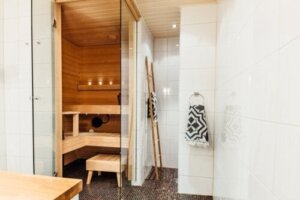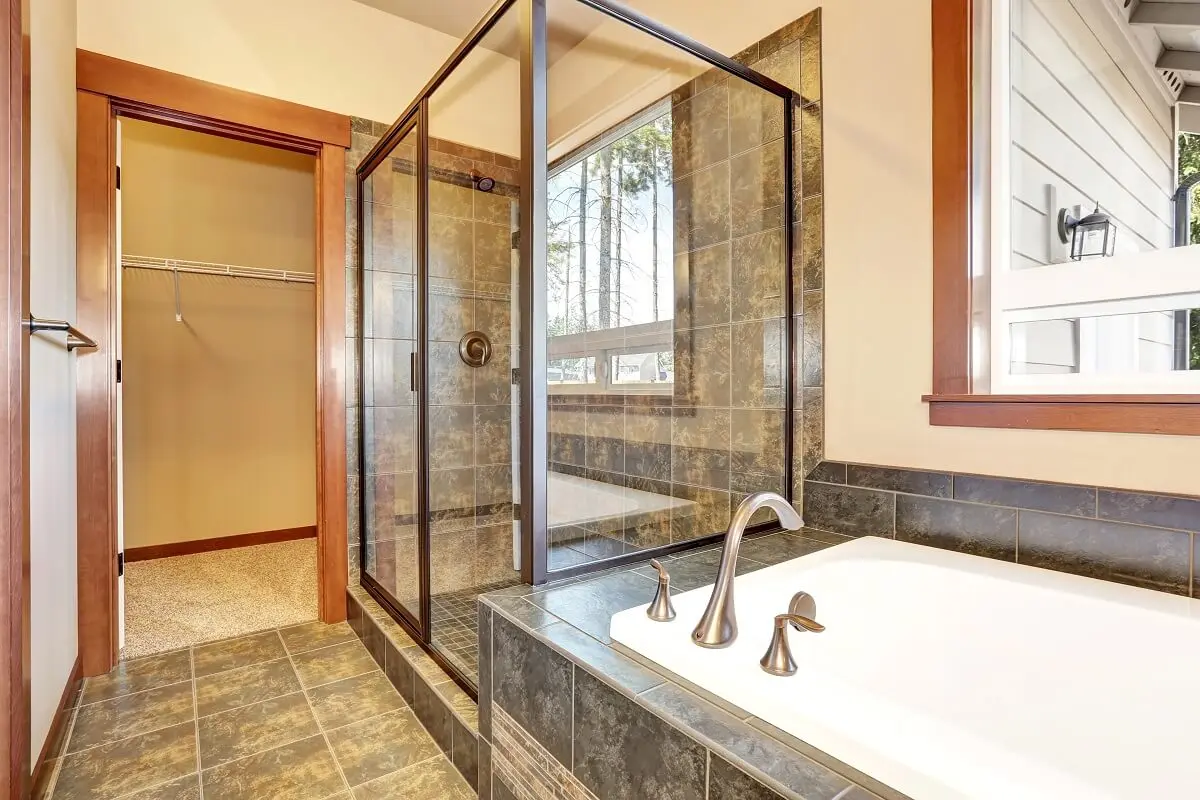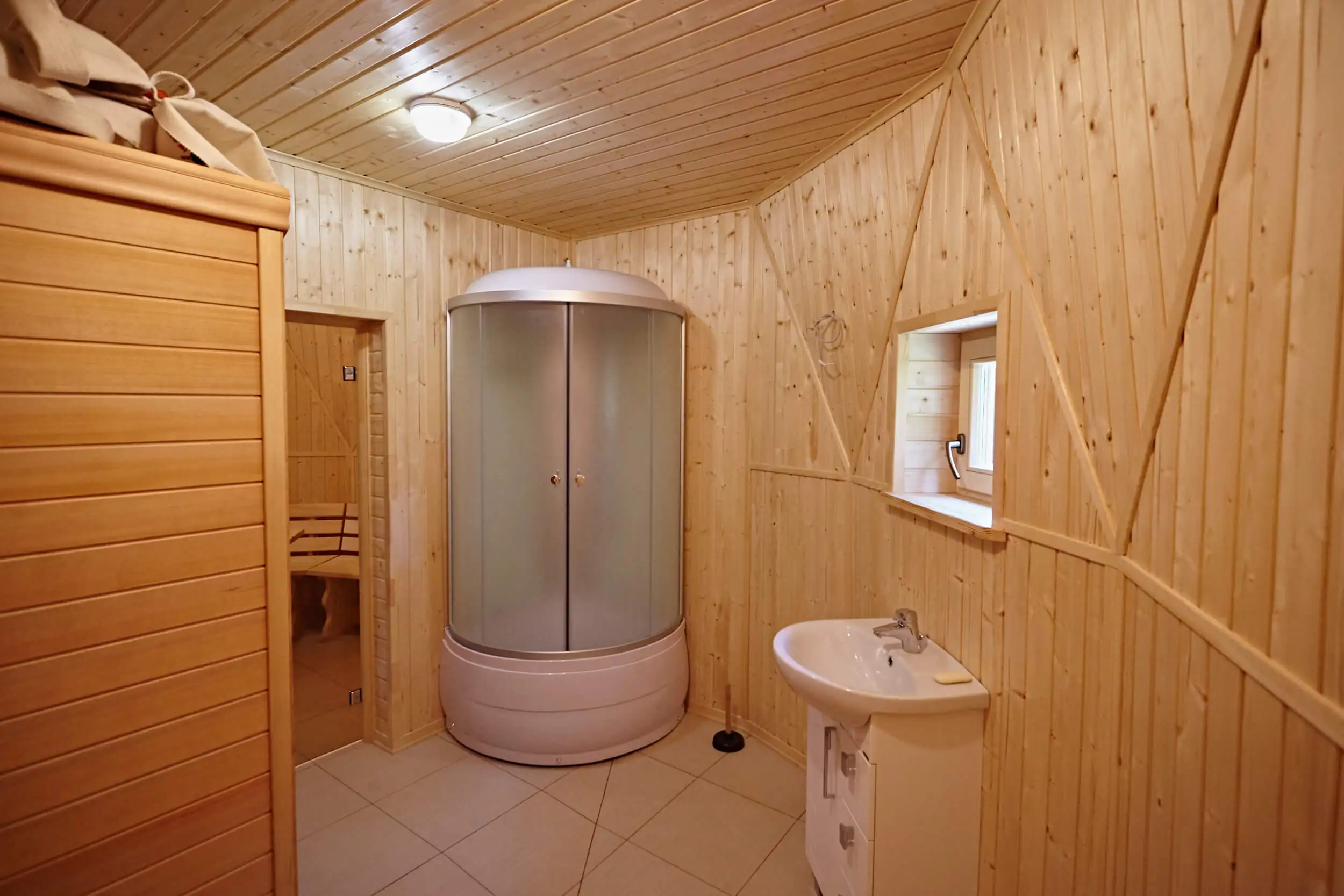A Hammam at Home: The Benefits and Considerations Before Installation

A hammam at home is an investment that pays off in favor of hygiene and health, both physical and emotional. These bathrooms have long ceased to be exclusive to clubs and spas and are increasingly included in the homes of those seeking moments of relaxation.
Unlike what happened in the Middle East, where Turkish showers first appeared, nowadays hammams are not only used for social gatherings, but are chosen for relaxing, solitary moments, especially in homes.
What is a hammam, and how to use it?
Hammams are a kind of Turkish bath. They consist of a sauna with temperatures not exceeding 48 °C due to the steam system and moist heat. These rooms offer therapeutic advantages; that’s why some people decide to adapt their conventional baths to a hamman style.
The objective is to take advantage of the sessions in the steam cabin that’s activated through a generator. Then, you move on to the moisture relaxation phase and finish with a cold water shower. Since they’re airtight, hammams concentrate the humidity, and the air condenses on the walls.
It’s recommended that you hydrate your body with cold water before entering the hammam. Fifteen to 30 minutes is the maximum time suggested inside a hammam.

The bnefits of having a hammam at home
Water is essential for health and wellness. An article by the National Institute of Public Health of Mexico highlights that no function in the body can develop without water, that it regulates temperature, lubricates the joints, and has effects on the functioning of the brain.
In a Turkish bath, thanks to the heat and humidity, it’s possible to enjoy all these benefits, plus those mentioned below.
Hot baths help blood circulation
Hot baths such as hammams are considered “thermotherapeutic,” as they increase both the temperature and the blood flow through the tissues. In this way, they provoke anti-inflammatory and analgesic actions, as explained in the analysis of hydrotherapeutic techniques.
They contribute to the relief of menstrual cramps
During the menstrual period, steam contributes to the relief of discomfort. The Mayo Clinic highlights that applying heat in the shower, with compresses, and with heat packs, among others, minimizes menstrual cramps.
They help relieve stress
Taking a bath in a hammam can contribute to the relief of tension and stress. The heat, coupled with the moisture, promotes muscle relaxation. In addition, it causes a relaxing effect that is reflected in emotional well-being.
They favors the quality of our sleep
Research on restful rest revealed that people deprived of sleep seem less healthy, less attractive, and more tired compared to those who do sleep well.
Warm baths are recommended for good sleep. According to a study published by Sleep Medicine Reviews, passive body warming through a shower or a warm bath before going to bed improves rest.
They contribute to our skin health
The vapors of a hammam at home are good for improving skin appearance. During the bath, the dilation of the pores stimulates the tissues and optimizes the cleansing of the skin. Among other things, it prepares the dermis to receive nutrients that contribute to its freshness and softness.
They’re useful for the respiratory tract
The vaporization of a hammam is expectorant, which is useful for colds and coughs. In addition, the heat of the Turkish baths favors nasal decongestion, relieves throat discomfort, and is good for the lungs.
Like this article? You may also like to read: The Benefits of Shiatsu Massage for Your Body
Aspects to consider before installing a hammam at home
There are a few factors that you need to keep in mind when installing a hammam at home. The main one is the appropriate space. Although it’s not essential to have a large space, it is essential to have at least the relevant length for accessories, such as a seat and a towel rack, for example.
Seek the advice of experts in the design of these cabins to make them functional and beautiful. The professional will point out if a deep remodeling is needed, as well as the following aspects:
- Height: So that there’s no waste of energy, it’s suggested that the height of a Turkish bath does not exceed 2.30 meters.
- Steam: Check which generator adapts to the requirements of the shower. There are many brands and models.
- Temperature: In the event of high humidity, the correct thing to do would be to adjust the temperature so that it doesn’t exceed 45 °C.
- Walls: As well as the doors, they must be hermetic in order not to disperse the heat. The best material is glass.
- Access to electricity and plumbing: Every Turkish bath requires electrical outlets, proximity to water pipes, and drainage. Remember that a hammam works with special equipment, such as domestic steam generators and diffusion panels.
- Furniture: Wooden furniture is generally used, as it goes hand in hand with the warmth of the hammam. This element conveys the feeling of tranquility and comfort.

We think you may also enjoy reading this article: What is Hot Stone Massage and What Are the Benefits?
Complements for a hammam at home
The environment inside a hammam is important for it to acquire the therapeutic touch. You can add dim or LED lights, as some studies accentuate the relaxing effects of lighting, especially after stressful sessions.
It’s also beneficial to incorporate plants with fragrances such as eucalyptus or rosemary; if you prefer, you can also use some aromatic essences. Music is another complement in Turkish baths; make playlists with soft melodies. With the environment in tune, all that’s left is enjoying this special bathing experience!
All cited sources were thoroughly reviewed by our team to ensure their quality, reliability, currency, and validity. The bibliography of this article was considered reliable and of academic or scientific accuracy.
- Aciksoz S, Akyuz A, Tunay S. El efecto de los métodos de aplicación local superficial de frío y calor autoadministrados sobre el dolor, el estado funcional y la calidad de vida en pacientes con artrosis primaria de rodilla. Revista de Enfermería Clínica. Vol. 26. Reino Unido; 2017. https://onlinelibrary.wiley.com/doi/10.1111/jocn.14070
- Agua: clave la para la salud y el bienestar. Instituto Nacional de Salud Pública. México; 2022. https://www.insp.mx/avisos/agua-clave-para-la-salud-y-el-bienestar
- Axelsson J, Ingre M, Lekander M, Olsson A, Sundelin T, Van Someren E. Sueño reparador: estudio experimental sobre la salud percibida y el atractivo de las personas privadas de sueño. British Medical Journal. Reino Unido; 2010. https://www.bmj.com/content/341/bmj.c6614
- Calambres menstruales. Clínica Mayo. Estados Unidos; 2022. https://www.mayoclinic.org/es-es/diseases-conditions/menstrual-cramps/diagnosis-treatment/drc-20374944
- Castriotta R, Diller K, Haghayegh S, Khoshnevis S, Smolensky M. Calentamiento corporal pasivo antes de acostarse mediante una ducha o un baño tibio para mejorar el sueño: una revisión sistemática y un metanálisis. Reseñas de Medicina del Sueño. Vol. 46. pp. 124-135. Reino Unidos; 2019. https://www.sciencedirect.com/science/article/abs/pii/S1087079218301552?via%3Dihub
- López Gordo M, Minguillón J, Pelayo F, Renedo Criado D, Sánchez Carrión M. La iluminación azul acelera la relajación post-estrés: resultados de un estudio preliminar. Plos One. Estados Unidos; 2017. https://journals.plos.org/plosone/article?id=10.1371/journal.pone.0186399
- Meijide Failde R, Rodríguez Villamil Fernández JL, Tejeiro Vidal J. Técnicas Hidroterápicas. http://www.sld.cu/galerias/pdf/sitios/rehabilitacion-fis/tecnicashidroterapicas.pdf
This text is provided for informational purposes only and does not replace consultation with a professional. If in doubt, consult your specialist.








